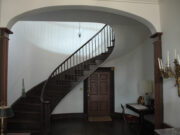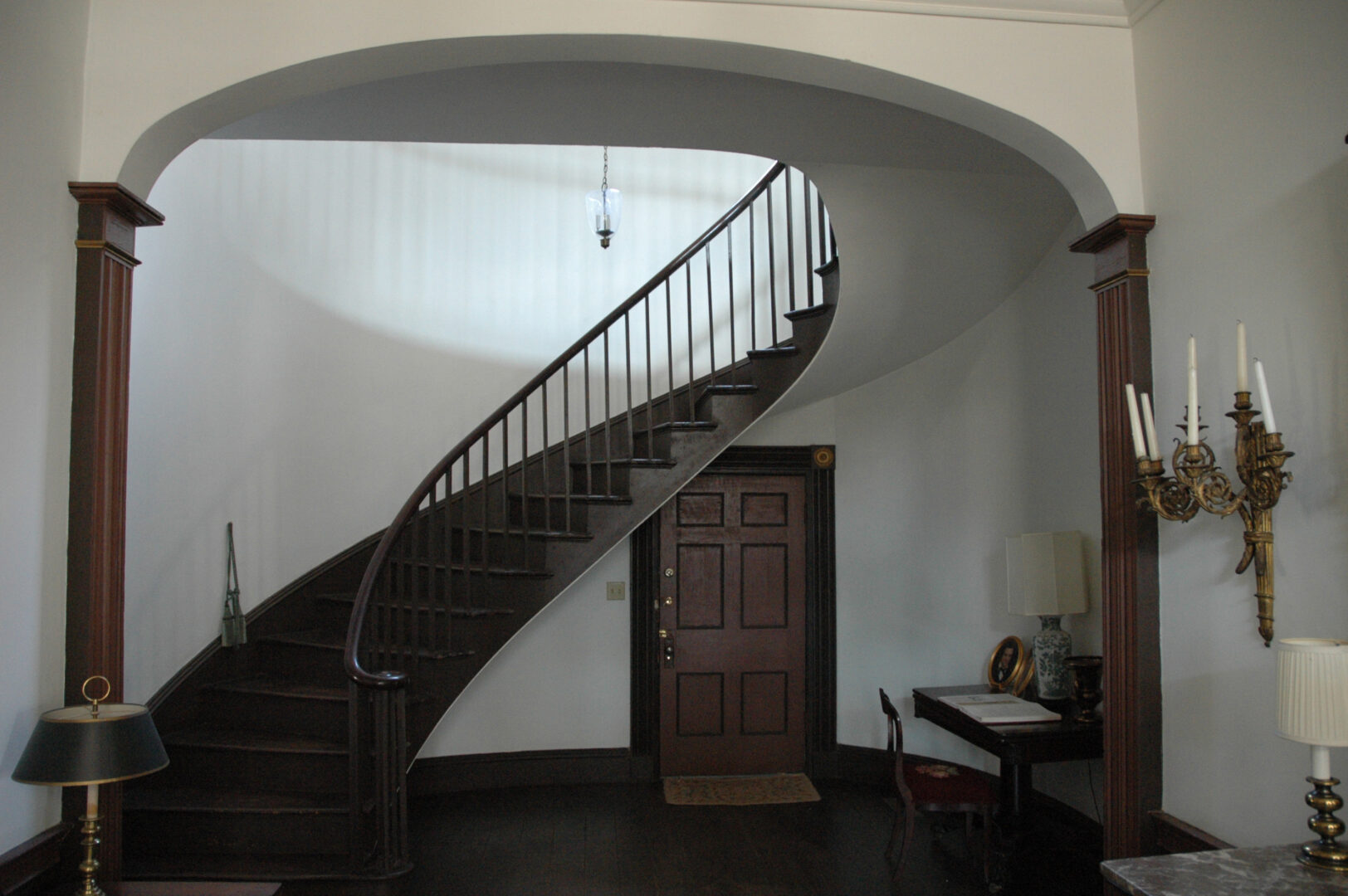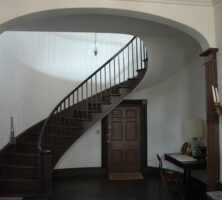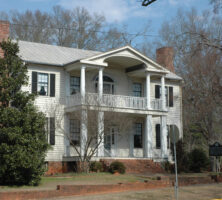The State’s Rights Hotel served as Georgia’s Whig Party headquarters from about 1839 to 1847. During its operation, the hotel was one of several politically oriented taverns and hotels in Milledgeville, the state’s capital at the time. It also served as the stage for numerous political meetings, conventions, and the inauguration celebration of Governor George W. Crawford, Georgia’s only Whig governor.
Constructed in 1825, the State’s Rights Hotel was designed by noted architect John Marlor and built for George Brown, a local businessman and plantation owner. The building is rooted in the Federal architectural style but is interesting for its large Palladian arch in the pediment of the building. Little is known about the operations of the building during its early years, but surviving records indicate that the structure was primarily utilized as a tavern. In 1837 Brown died and left the building to his son John, who forged a partnership with his brother-in-law Samuel Beecher. The two opened a new business at the site and named it the State’s Rights Hotel.
On October 29, 1839, the first advertisement for the new business appeared in Milledgeville’s Southern Recorder. The advertisement informed readers that “the proprietors of the commodious house respectfully inform the public and their old patrons that they are refitting and furnishing the establishment anew for the approaching session of the legislature.” Catering their business to the state’s legislators afforded Beecher and Brown rare access to the political circles of Georgia, as legislators and political leaders from across the state lived and worked at the hotel throughout the legislative session. Along with the State’s Rights Hotel, the Globe Hotel, Samuel Buffington’s Jackson Hall, and the Lafayette Hall focused their operations toward the legislators’ needs. In this atmosphere of political activity, Beecher and Brown, both Whigs, took strides to make their party affiliation known.
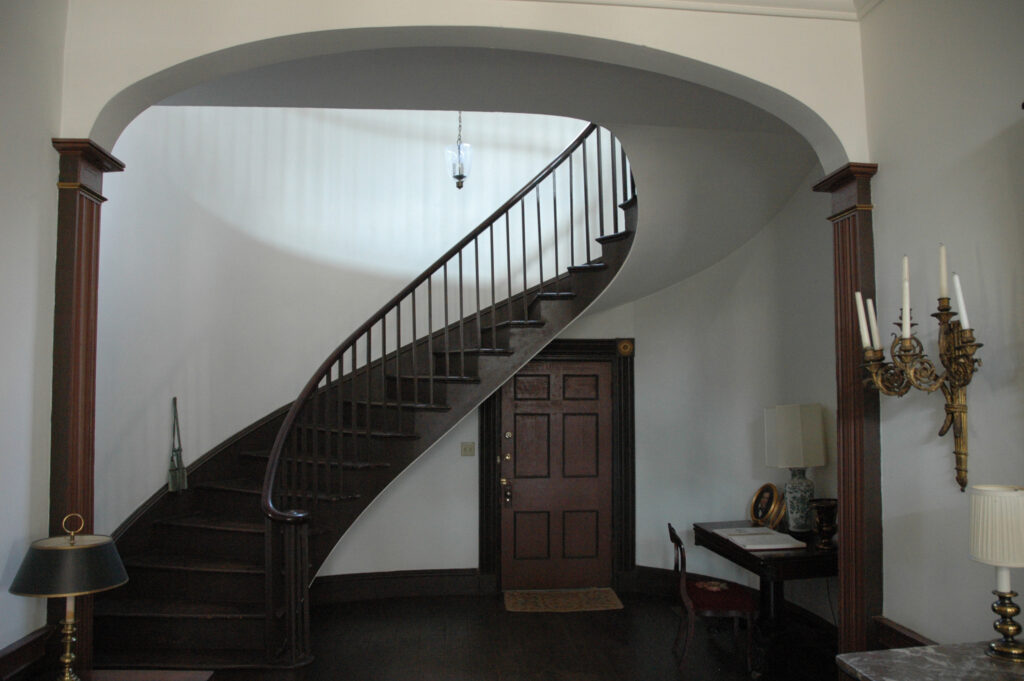
Courtesy of Georgia's Old Capital Museum
Throughout the 1840s, the State’s Rights Hotel played host to various Whig meetings and conventions, including legislative nomination conventions and an elector’s convention for the presidential election of 1840. To show support for the Whig candidacy of William Henry Harrison, Beecher and Brown renamed the structure the Anti-Van Buren State’s Rights Hotel and the Harrison and Reform State’s Rights Hotel. Following Harrison’s victory, the structure returned to its original name.
On November 8, 1843, the hotel played host to an inaugural celebration for Georgia’s newly elected governor George W. Crawford, the only Whig elected into the state’s highest office. By the late 1840s, the importance of the Whig party had declined, as the Democratic Party became the dominant force in southern politics. Due to the loss of a steady customer base, operations of the hotel ceased around October 1847. In 1855 the hotel was sold to Daniel Stetson, who converted the structure into a private residence.
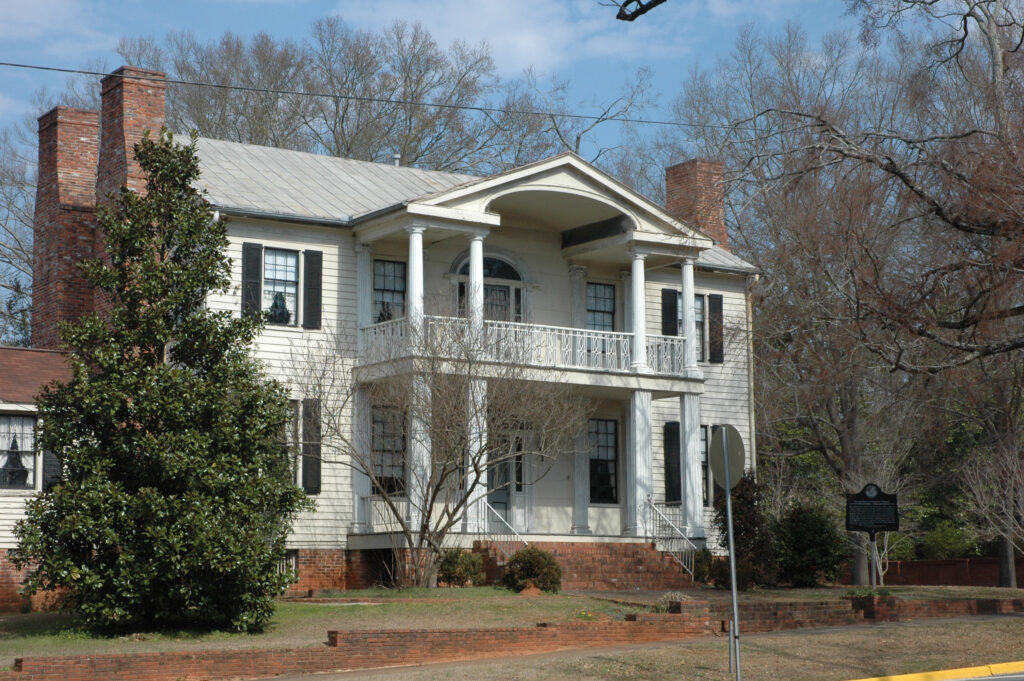
Courtesy of Georgia's Old Capital Museum
For the next century, the State’s Rights Hotel served as a private residence for two families and as a restaurant. In 1966 the building was saved from demolition and moved from its original location to a new site, where it was converted into a museum and civic center. Known today as the Brown-Stetson-Sanford House, the structure is a permanent fixture on Milledgeville’s historic tours and is currently operated by the Old Capital Museum. In 1972 Milledgeville’s historic downtown, including the former State’s Rights Hotel, was added to the National Register of Historic Places.


